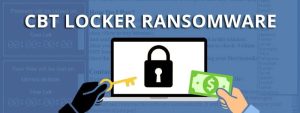Ransomware is a pernicious form of malware that infiltrates computer systems, wreaking havoc and demanding a ransom for data recovery. One of the latest variations of this threat is the CBT Locker Web Hosting, a spin on the notorious CBT Locker for desktops, allowing attackers to hold WordPress websites hostage and demand payment for their release.
Understanding CBT Locker and Ransomware
Ransomware, which has gained notoriety in recent years, is a malicious tool used by attackers to extort money from their victims. It encrypts all files and leaves the victim with a message stating that their data won’t be decrypted until a ransom is paid, ranging from $50 to thousands of dollars. Delaying payment often leads to an increase in the ransom amount, and payments are typically demanded in bitcoins. This scam has raked in millions in ransom fees.
CBT Locker operates similarly, with attackers convincing victims to download malicious software, which can be an easier task than compromising a website’s security.
Hacking a website involves gaining access to the file system and uploading malicious files. This can be achieved through phishing attacks or keyloggers. Vulnerable WordPress sites susceptible to SQL injections can provide attackers with elevated privileges on the web server.
What Happens After a Website Is Hacked?
After a website is hacked, the attacker uploads a new index.php file. The index.php file is the default file that launches the content for a website’s homepage. The attacker’s index.php file replaces the legitimate one, and the next time it executes, it triggers data encryption.
The malicious code searches for numerous file types, especially those that are critical to users. Some of the file types that ransomware, including CBT Locker, searches for include .doc, .jpg, .png, .txt, .docx, .xls, .xlsx, .pdf, and .ppt.
Ransomware employs a two-key system: a public key is used to encrypt the data, and a private key is required to decrypt it. Only the private key can unlock data encrypted with the public key. When a ransom is paid, it covers the cost of the private key.
A noteworthy aspect of the CBT Locker web hosting version is the real-time chat system. If your data is decrypted, you can use the chat system to communicate with the attacker. The attacker may assist you in finding a bitcoin provider and provide technical instructions for making the payment.
Securing WordPress Sites with InterShield
To protect your website, the attacker needs access. Therefore, the only way to defend against this attack is to be aware of common vulnerabilities within WordPress.
The most common way attackers gain access to a site is through a malicious plugin. Even trusted plugins may have vulnerabilities that give attackers control of the site. Only install trusted plugins from authors who stay up-to-date on the latest threats and frequently update their software to patch recent bugs. Never download random plugins from sites that promise cracked themes (also known as “nulled” themes).
Some legitimate plugins are known to have vulnerabilities. Responsible plugin developers release patches to address vulnerabilities and provide updates as quickly as possible. It’s essential to update your plugins whenever a patch is released to prevent your site from being hacked.
Penetration testing involves having a “white hat” hacker run scripts on your website to identify common vulnerabilities. You can pay for testing or purchase software that performs penetration tests on your WordPress site. If any vulnerabilities are found in your plugins, you can either disable them and find replacements or contact the plugin author in the hope of receiving a fix.
SQL injection is a common attack on database vulnerabilities. Unless you understand SQL language and how databases work, you won’t know how to detect these vulnerabilities. A penetration test includes SQL injection vulnerability assessments.
In addition to keeping your software up-to-date, be vigilant about phishing scams when reading your emails. Never divulge your login credentials for your web server to anyone.
Rest assured, if you have purchased our shared hosting, you are well protected from any lurking malware. In the event your site is compromised, we are here to assist you in cleaning it up. This support extends to every customer using a managed WordPress plan. Furthermore, with InterShield, we deploy a comprehensive five-pronged defense against vulnerabilities, which includes a web app firewall, file upload scanner, automatic scanning of running scripts, outbound email security, and malware detection.


